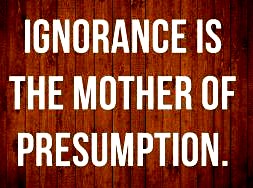McKendry v McKendry 2015 BCSC 2433 dealt with a very common fact pattern in estate disputes- where a parent puts the property in joint names with one child and excludes the other children, thus disinheriting them.
In McKendy the transfer was held to be a trust and the property thus was an estate asset that was subsequently varied in a wills variation action at the same time and each child received an equal share.
It is significant that both the resulting trust claim and the wills variation claims were heard at the same time by the court. Many defence counsel have long argued that this should not occur, but it frequently does and I submit it is entirely appropriate.
The Law of Resulting Trusts
The legal principles applicable when considering a gratuitous transfer into joint tenancy are not in dispute. The basic question is whether the transferor intended to make a gift, or whether the transferee holds the property transferred on a resulting trust.
[110] Pecore v. Pecore, 2007 SCC 17, is the leading case.
[111] It is the actual intention of the transferor at the time of the transfer that is relevant: Pecore, at paras. 5, 44 and 59. The presumption of resulting trust is a rebuttable presumption of law and general rule that applies to gratuitous transfers. When a transfer is challenged, the presumption allocates the legal burden of proof. Thus, where a transfer is made for no consideration, the onus is placed on the transferee to demonstrate that a gift was intended. See Pecore, at paras. 24 and 43. Rothstein J. also noted (Pecore, at para. 44):
[44] As in other civil cases, regardless of the legal burden, both sides to the dispute will normally bring evidence to support their position. The trial judge will commence his or her inquiry with the applicable presumption and will weigh all of the evidence in an attempt to ascertain, on a balance of probabilities, the transferor’s actual intention. Thus, as discussed by Sopinka et al. in The Law of Evidence in Canada, at p. 116, the presumption will only determine the result where there is insufficient evidence to rebut it on a balance of probabilities.
[112] Accordingly, where a gratuitous transfer is being challenged, the trial judge must begin the inquiry by determining the proper presumption to apply and then weigh all the evidence relating to the actual intention of the transferor to determine whether the presumption has been rebutted: Pecore, at para. 55. In general, evidence of the transferor’s intention at the time of the transfer ought to be contemporaneous, or nearly so to the transaction: Pecore, at para. 56. Nevertheless, evidence of intention that arises subsequent to a transfer should not automatically be excluded. However, such evidence “must be relevant to the intention of the transferor at the time of the transfer: . . . The trial judge must assess the reliability of this evidence and determine what weight it should be given, guarding against evidence that is self-serving or that tends to reflect a change in intention.” See Pecore, at para. 59.
[113] In Fuller v. Harper, 2010 BCCA 421, D. Smith J.A. elaborated on how the presumption of resulting trust should be applied to a gratuitous transfer of real property. After reviewing Pecore, she wrote (at para. 47):
[47] The effect of the presumption only becomes evident after all the evidence, both direct and circumstantial, on the surrounding circumstances in which the transfer was made, has been weighed. Only if the trial judge is unable to reach a conclusion about the transferor’s actual intention at the time of the transfer, will the presumption be applied to tip the scales in favour of the transferor or his estate: Sopinka, Lederman & Bryant, The Law of Evidence in Canada, 3d ed. (Markham, ON: LexisNexis Canada, 2009) at page 159, § 4.60.
[114] D. Smith J.A. also discussed the concept of the right of survivorship that is inherent in the creation of a joint tenancy, and wrote (at para. 53):
[53] . . . [T]he legal and equitable title (the right of survivorship) of a joint tenancy vests at the time the joint tenancy is created. Therefore, the gift of a joint interest in real property is an inter vivos rather than a testamentary gift and cannot be retracted by the donor. It is a “complete and perfect inter vivos gift” (Pecore at para. 49 referring to Ferguson J.A.’s comments in Reid, Re (1921), 64 D.L.R. 598, 50 O.L.R. 595 (Ont. C.A.) at 608).
[115] I note that Madam Justice Smith’s comments in this paragraph assume sufficient proof that a gift has been made.
[116] The Court of Appeal again discussed these matters, also in the context of a joint tenancy in land, in Bergen v. Bergen, 2013 BCCA 492.
[117] Newbury J.A. rejected the proposition advanced by counsel for the appellant (the defendant Robert Bergen) that, once a right of survivorship is conferred, a “complete and perfect” inter vivos gift of the transferred property itself, including the beneficial interest therein, vests immediately in the transferee: Bergen, at para. 36. She confirmed (citing Pecore and Kerr v. Baranow, 2011 SCC 10) that the actual intention of the transferor is the key factor: Bergen, at para. 38. Newbury J.A. contrasted a joint bank account with a joint tenancy in land, and wrote (at paras. 40-42):
[40] Where a joint tenancy in land is concerned, on the other hand, either of the joint tenants is at liberty to sever the joint tenancy at any time − a fact that clearly undermines the notion that as a matter of law, a joint tenant receives a “full and perfect” inter vivos gift of the “survivorship” (and counsel for Robert contends, of the property itself). Severance, which occurs automatically upon the destruction of the four unities, ends the jus accrescendi, with the result that each co-owner becomes entitled to a distinct share in the land rather than an undivided interest in the whole. (Under s. 18(3) of the Property Law Act, R.S.B.C. 1996, c. 377, a joint tenant may sever the joint tenancy—and thus the “survivorship” – by transferring the property to himself and need not even notify the co-owner. See generally Law Reform Cm’n., supra, at 5-9 and 33-44; and A.J. McClean, “Severance of Joint Tenancies” (1979) 57 Can. B. Rev. 1.) As observed by Steel J.A. in Simcoff v. Simcoff 2009 MBCA 80, a case involving land, “the fact that a ‘complete gift’ … included a right of survivorship does not, prima facie, prevent a donor from dealing with the retained interest while alive. The right of survivorship is only to what is left.” In the case of real property (and personalty, for that matter) nothing remains of the right of survivorship.
[41] Of course it remains true that once a gift has been made of an interest in real property or any other type of property, the gift cannot be revoked − whether the transferee takes as a joint tenant or tenant in common. As stated by D. Smith J.A. in Fuller v. Harper, “The gift of a joint interest in real property is an inter vivos rather than a testamentary gift and cannot be retracted by the donor. It is a ‘complete and perfect inter vivos gift’ …”. (At para. 53.) At the same time, in cases where the property was provided by the transferor, the transferee must still prove that a gift was intended − i.e., he or she must rebut the presumption of resulting trust. Pecore cannot be read as suggesting that the Court intended to do away with the presumption or the necessity of rebutting it with reference to the transferor’s intention: that was the crux of the majority’s reasons. . . .
[42] In the result, I do not accede to the submission of counsel for Robert that once an interest in land (which A acquired with his own funds) has been transferred by A to A and B as joint tenants, it follows as a matter of law and regardless of A’s intention, that B has received an immediate gift of that interest, including the beneficial ownership thereof in the property. If B wishes to assert such an interest, whether during A’s lifetime or upon A’s death, he or she must, in Rothstein J.’s words, “rebut the presumption of resulting trust by bringing evidence to support his or her claim.” (Para. 41.) Consistent with this, the authors of Waters in the most recent edition (post-Pecore) state:
If A supplies the purchase money and conveyance is taken in the joint names of A and B, B during the joint lives will hold his interest for A, B will also hold his right of survivorship − again by way of resulting trust for A’s estate, because that right is merely one aspect of B’s interest. In other words, the starting point is that B holds all of his interest on resulting trust for A, or A’s estate. However, evidence may show that, while A intended B to hold his interest for A during the joint lives, it was also A’s intention that, should he (A) predecease, B should take the benefit of the property. The presumption of resulting trust would then be partially rebutted, in relation to the situation that has arisen, so that B would not hold his interest (now a sole interest and not a joint tenancy) on resulting trust. He would hold it for his own benefit. [At 405; emphasis added.]
See also Waters (4th ed.) at 440.
[118] These paragraphs from Bergen confirm that the mere fact that the transferor has transferred title to real property into the names of the transferor and transferee as joint tenants tells us nothing about the transferor’s actual intention. The transferee must still prove that, at the time of the transfer, the transferor intended to make a gift. Otherwise, there is a resulting trust.








 Resulting Trust Presumption
Resulting Trust Presumption
